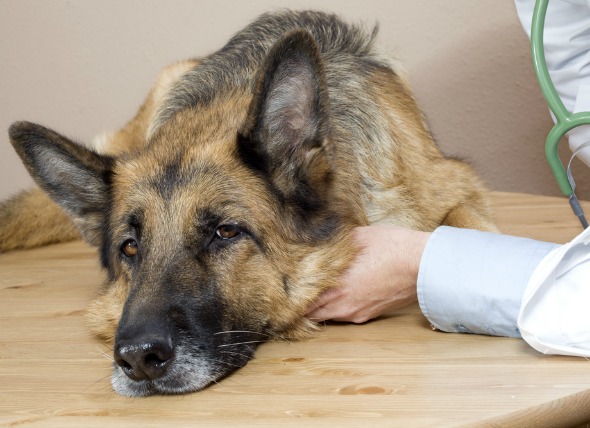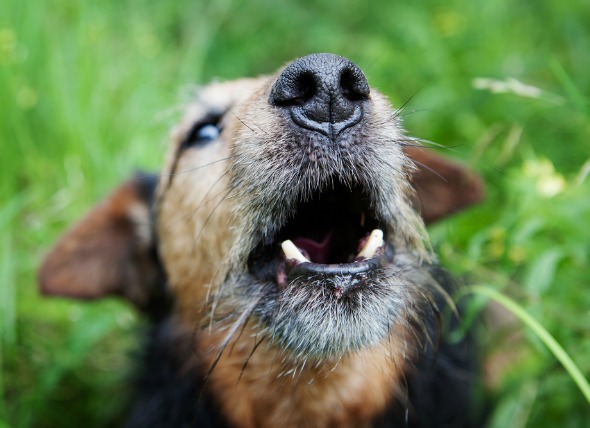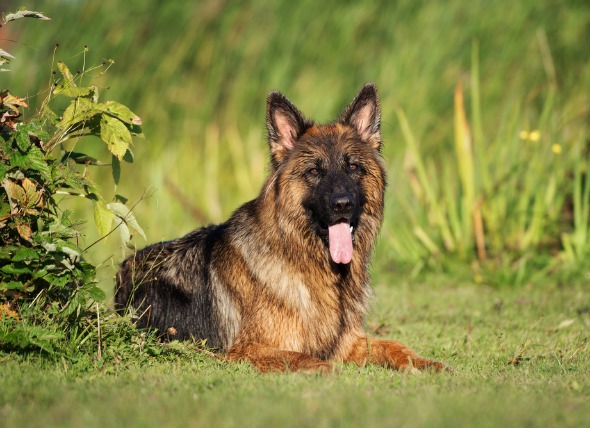

Alopecia and dermatosis are skin and hair disorders related to an imbalance of reproductive hormones. More specifically, alopecia is characterized by a loss of hair leading to baldness, and dermatosis is characterized by a diseased condition of the skin. There are a lot of reasons for why a dog would have these types of reactions, but if all indications point to an imbalance in hormones related to reproductive functioning, your veterinarian will try supplemental therapy to either lower or raise hormone levels to a normal amount. Identification of hormone related alopecia and/or dermatosis is assured when the conditions spontaneously resolve after the use of reproductive hormone therapy.
Symptoms:
Types:
Affected animals are categorized, and treated, according to the measurable amount of reproductive hormones being produced in the body:
Estrogen-responsive - ovarian imbalance II in females - rare
Too much estrogen - ovarian imbalance I in females - rare
Too much estrogen – in intact male dogs with testicular tumors
Too much androgen (male reproductive hormone) - associated with testicular tumors in intact, non-neutered males
Testosterone-responsive – in older, castrated males - rare
Castration-responsive - intact males with normal, descended testicles
Adrenal reproductive hormone imbalance - adrenal hyperplasia–like syndrome (enlargement of tissue)
You will need to give a thorough history of your dog's health, including a background history of symptoms, and possible incidents that might have preceded this condition. Your veterinarian will then perform a thorough physical exam on your dog, including a biochemical profile, a complete blood count, a urinalysis, and an electrolyte panel. Serum sex hormone tests will often return as normal in affected dogs. A skin biopsy can illustrate abnormal sex hormone receptors in the skin.
X-ray, ultrasonography, and laparoscopy (using a small camera to examine the interior of the abdomen) imaging can be used for detection of ovarian abnormalities, testicular disorders and cancer.
An adrenocorticotropin hormone (ACTH) stimulation test, and an adrenal reproductive hormone test may be performed to measure the functional capability of the adrenal gland, and to be sure that it is specifically producing reproductive hormones. And a Gonadotropin-releasing hormone (GnRH) response test can demonstrate the response of the cells in the testes and ovaries to gonadotropin hormones. Specifically, the hormones that produce testosterone, primarily.
If your dog is suffering from abnormal reproductive hormone levels, neutering or spaying will be one of the primary treatments. This alone may be enough to resolve the skin disorders. If your dog is on estrogen therapy, and the results are adverse to the health of your dog, your veterinarian will discontinue it. Your veterinarian will prescribe prescription shampoo for dandruff, and topical medicines for the treatment or prevention of bacterial skin infections and itching.
It is highly advised that all dogs suspected of suffering from sex hormone related skin disorders should be spayed or neutered, but in any case, you should not breed your male dog if it is affected with cryptorchidism (undescended testicles). Your veterinarian will schedule follow-up appointments as necessary for further treatment of any underlying sex-hormone related causes of the skin disease.
 Prostate Gland Enlargement in Dogs
Benign Prostatic Hyperplasia in Dogs
The prostate
Prostate Gland Enlargement in Dogs
Benign Prostatic Hyperplasia in Dogs
The prostate
 Heartworm Disease in Dogs
Dirofilariasis in Dogs (Heartworms in Dogs)
Dogs
Heartworm Disease in Dogs
Dirofilariasis in Dogs (Heartworms in Dogs)
Dogs
 Paralysis Due to Spinal Cord Injury in Dogs
Myelomalacia in Dogs
“Myelomalacia” o
Paralysis Due to Spinal Cord Injury in Dogs
Myelomalacia in Dogs
“Myelomalacia” o
 Collection of Fluid in the Lungs (Not Due to Heart Disease) in Dogs
Noncardiogenic Pulmonary Edema in Dogs
Nonc
Collection of Fluid in the Lungs (Not Due to Heart Disease) in Dogs
Noncardiogenic Pulmonary Edema in Dogs
Nonc
 Fluid Buildup in the Sac Surrounding the Heart in Dogs
Pericardial Effusion in Dogs
Pericardial effusion
Fluid Buildup in the Sac Surrounding the Heart in Dogs
Pericardial Effusion in Dogs
Pericardial effusion
Copyright © 2005-2016 Pet Information All Rights Reserved
Contact us: www162date@outlook.com